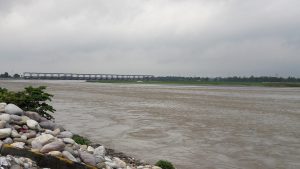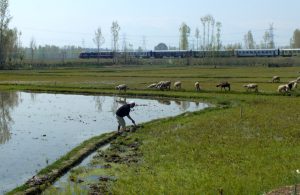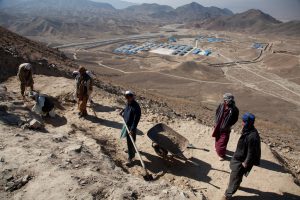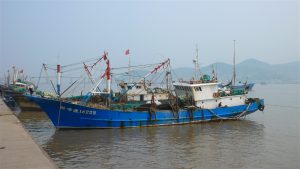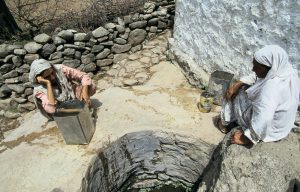Anjal Prakash spoke with Kate Schreckenberg and Mahesh Poudyal to understand the key outputs and implications the Ecosystem Services for Poverty Alleviation (ESPA) programme has for South Asia.
Anjal Prakash (AJ): Tell us about the ESPA programme.
Kate Schreckenberg (KS) and Mahesh Poudyal (MP): ESPA is a global interdisciplinary research programme that aims to give decision-makers and natural resource users the evidence they need to address the challenges of sustainable ecosystem management and poverty reduction. The programme was developed by the UK government in response to the findings of the 2005 Millennium Ecosystem Assessment – that substantial gains in human wellbeing in recent decades have been achieved at the expense of high – and often irreversible – levels of ecosystem degradation. It has been running for the past nine years and has funded over 120 research projects in the Global South. Last year, ESPA started synthesizing its academic results and taking them to people in South Asia through a series of workshops. There are more than 900 researchers working in this programme worldwide and half of them come from the Global South.
AP: What have we learnt? What implications do the findings have, particularly for south Asia?
KS & MP: The research synthesis reveals that there are tough decisions to be made in achieving poverty alleviation while sustaining the environment. Some environment-related decisions are made without sufficient consideration of the trade-offs. For example, land use intensification may lift people out of poverty through high production but often this comes at the cost of biodiversity loss and may exclude the poorest people. There are ecological and social trade-offs, and these are tough decisions to make. They arise because we have different conceptions of wellbeing and aspiration. In order to make decisions, we need to understand wellbeing in a larger sense. The other issue is that increasing ecosystem services supply does not automatically lead to equitable development or improvements in wellbeing. Contextual challenges may lead to unequal distribution of resources, benefits, or impacts across locations. Therefore, greater understanding of the political economy and power issues are central to the distribution of environmental benefits, especially from the perspectives of the poor and marginalized.
The implications of ESPA research for South Asia are related to the interlinkages between difference scales – from local, regional, and national to international and global. For example, changes in the high mountains and cryosphere have an impact on downstream areas in terms of floods and disasters. Melting of ice is due to global warming, which is a global phenomenon that has local implications. Better governance mechanisms are needed to better connect decisions at different scales. Environmental governance issues are central to the lives and livelihoods of the people of South Asia.
AP: How are poverty alleviation issues linked with climate change adaptation in South Asia?
KS & MP: ESPA focuses more on ecosystem services than on climate change. However, we know from our research that poor people are directly dependent on ecosystem services for their daily survival. Climate change is altering this relationship to a large extent. While poor people have always needed to be resilient to normal weather patterns, they are finding it harder to be resilient as weather patterns become more extreme. They do not have the resources to overcome long droughts or floods. We need more focus on supporting resilience amongst the poorest. We have shown that the environment can play a positive role in providing livelihood and resilience, but it all boils down to governance at the local level.
AP: What can others learn from South Asia?
KS & MP: Research on the urbanisation and peri-urbanisation [areas bordering urban areas] processes has shown that there is no simple demographic split between rural and urban environments. Future growth will be greatest in small- and medium- sized towns. Peri-urban areas are highly dynamic and that creates governance space to negotiate between the rural and the urban. Our research in urban areas of the Hindu Kush Himalayan region has examined water security and urbanisation across small towns of the Western Himalaya in India and Nepal. This research has explored the ways in which urbanisation has changed the towns, lives, livelihoods, and connectivity of hill-dwelling communities. Specifically, the research used water as its entry point: examining how water availability and access strategies are reshaping these landscapes and the lives of their inhabitants. Some of the outcomes of this research have implications for other regions in the Global South that have similar trajectories of change.
AP: What are the headline outcomes of research on gender and climate issues from an ecosystems perspective?
KS & MP: We looked at social marginalization more broadly, which touched on issues of gender, minority ethnic groups, the young, old, disabled – and of course, with an overarching focus on how to improve the lives of the poorest members of society. Our synthesis of gender work across the ESPA programme suggests that many projects did not disaggregate data by gender, in spite of the fact that we know that women and men often have different social roles in managing natural resources – whether it’s producing food, consuming and re-using resources, or restoring the natural environment – on behalf of themselves and their families. Access to legal rights and decision-making over natural resources can also vary between women and men. ESPA research has investigated what these differences mean for ecosystem services and their links to poverty alleviation. Overall, there is a lack of research that focuses on gender with disaggregated data on gender and social differentials.
AP: How does ESPA look at the roles of communities (forest dwelling communities, fisherfolk, etc.) whose livelihoods are tied to the resources being affected? Do the communities have a voice?
KS & MP: ESPA research confirms that community voices are not part of the policy making process. There are no easy answers to how we can improve the situation. In one project on the Kenyan coast, researchers used participatory modelling with local communities to bring different stakeholders – women, fisherfolk, fish traders, etc. – together and provide them a space where their voices would be heard. By using a participatory method, the research was able to give the voices of women a chance to be heard within the community. Getting these voices heard at higher levels is the next step. The same project has been working with policy makers, providing them with data via a web-based data explorer. Participatory videos have been used in Tanzania at the local level to bring community voices to the fore.
In Peru, knowledge has been co-produced with local people, a good example of how we can create room for community voices to be heard. Peru and many countries in South Asia are similar in that downstream urban users rely on water produced by upstream communities in many of these countries. In Lima researchers and local NGOs have promoted a platform where the collaborating water service provider spends part of their profit on protecting watersheds upstream.
AP: From a programmatic perspective, what are some of the major learnings from the ESPA project?
KS & MP: A major lesson for us has been in the area of interdisciplinarity. We have learnt that the social sciences cannot be an add-ons. They need to be part of research design from the very beginning. Interdisciplinary research is not easy as people are largely trained in specific disciplines. Therefore, we recommend that project principal investigators have interdisciplinary backgrounds to facilitate collaboration between disciplines and find synergies between the different methods they use. We also realized that interdisciplinary research calls for efforts be made over longer periods than originally planned. More time is needed for synthesis. Effective interdisciplinarity requires many face-to-face meetings. The same is true for north-south partnerships, which have to be based on trust. You need to invest a lot in building trust if this kind of project is to succeed. Funders should not shy away from investing in meetings that bring people together.
Kate Schreckenberg is a Reader in Development Geography at King’s College, London and the Director of the UK-funded ESPA programme. Mahesh Poudyal is a Postdoctoral Research Fellow working with the programme.
![<p>Kate Schreckenberg, ESPA, speaking at the Regional Symposium on Ecosystem Services and Poverty Alleviation in South Asia: [image by: Jitendra Raj Bajracharya/ICIMOD]</p>](https://dialogue.earth/content/uploads/2018/04/Jiten_180313_MG_5983.jpg)

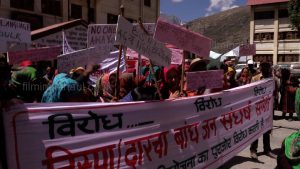

![Two fishermen on the Brahmaputra, a river that winds through four countries [image by: Sumit Vij]](https://dialogue.earth/content/uploads/2018/04/Brahmaputra-300x200.jpg)
